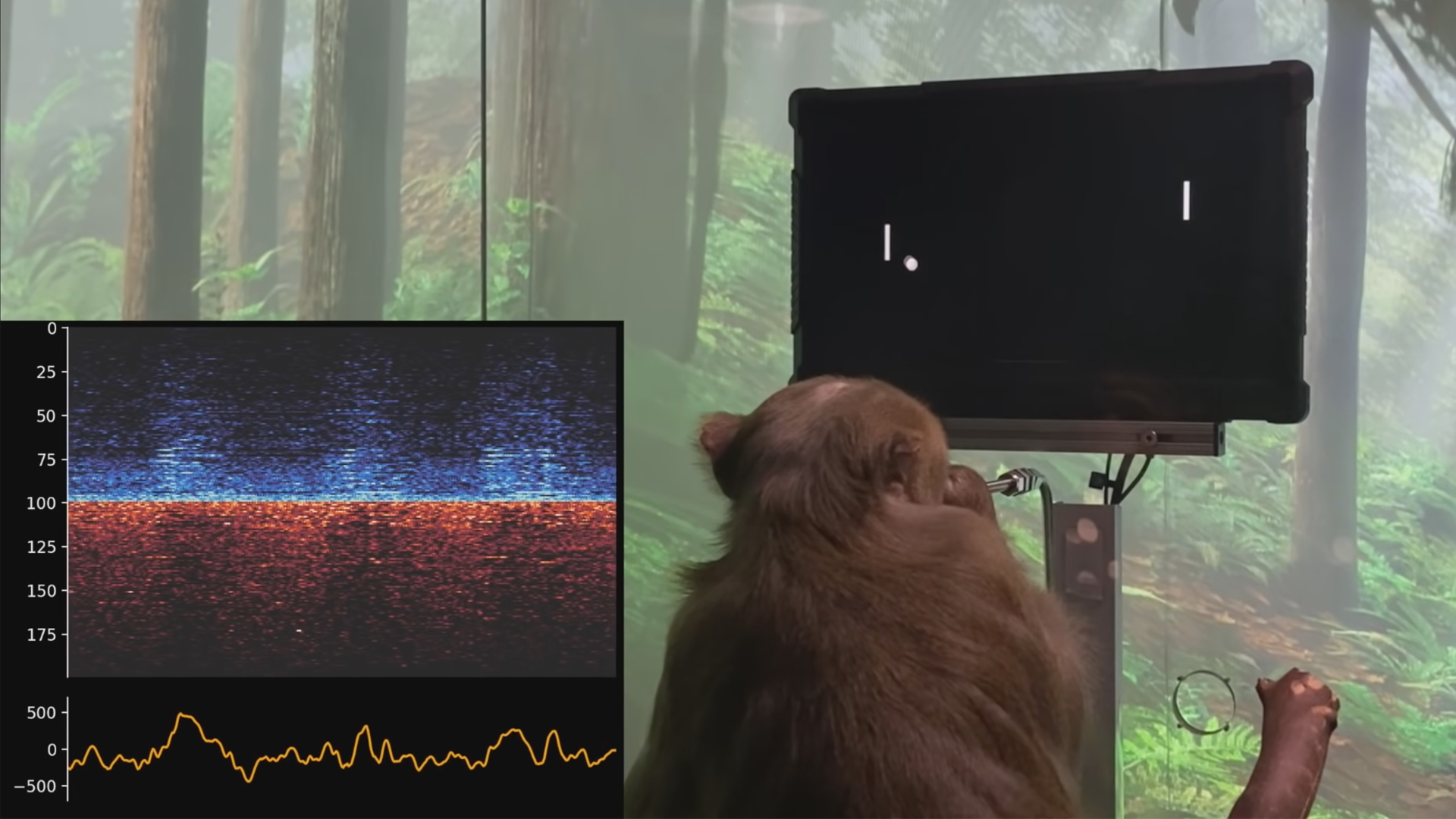
Neuralink, one of Elon Musk’s many technological ventures, has just taken a huge step forward. In a new blog post and video, we see a macaque with Neuralink implants playing a game of Pong using only its mind—no controllers.
The fascinating video from Neuralink details two different parts of the process. First, how Neuralink used the 1,024-electrode fully-implanted neural recording and data transmission device to record the baseline brain activity of the macaque (named Pager). To do this, researchers had Pager play a simple computer game wherein it would use a joystick controller to move a dot to a series of highlighted squares.
Then, the researchers take the data recorded from many neurons, and use a decoder algorithm to estimate Pager’s intended hand movements in real time. While Pager plays, the researchers wireless stream the data as it’s recorded—including the firing rates from thousands of neurons—and calibrate the decoder by mathematically modeling the relationship between the neural patterns seen in the stream to the correlating joystick movements.
Eventually, the researchers set up another round of the game but unplug the joystick. After that, they set up a game of Pong and remove the controller entirely. Pager then proceeds to control the paddle with only it’s mind using the Neuralink hardware.
While Elon Musk probably isn’t planning on building up an army of video game-playing macaques (at least, not that we know of, but then again, anything’s possible), the implications of Neuralink are tremendous. With this technology, Neuralink is hoping to help people with paralysis and other neurological disorders have direct neural control of a computer cursor and to be able to interact with smartphones.
Eventually, Musk also tweeted that he thinks “later versions will be able to shunt signals from Neuralinks in brain to Neuralinks in body motor/sensory neuron clusters, thus enabling, for example, paraplegics to walk again.” The claim is certainly ambitious and wonderful, but more research and trials are necessary before it will be able to move forward.
Source: Neuralink



